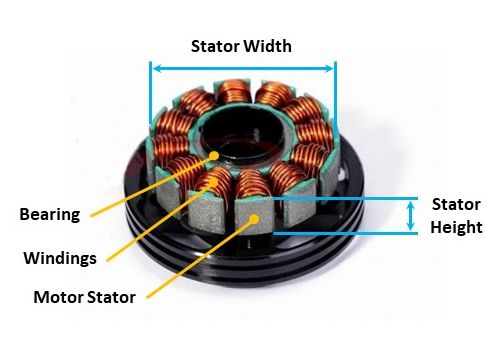The size of brushless motors are normally indicated by a 4-digit number of the pattern XXYY. The XX represents the motor stator width, while the YY represents the motor stator height. Both dimensions are in millimeters. See Figure 5.
A taller stator provides more power at higher RPM, while a wider stator provides more torque at lower RPM.
Also, a larger stator height means a bigger permanent magnet size (see Figure 6), while an increased stator width means a larger electromagnetic coil size.
The size of the prop shaft on the motor determines the size of the propeller that can be used. Motors with a M5 (5mm diameter) motor shaft are designed to be used with 3”, 4” 5”, and 6” propellers.
The kV motor specification is the number of revolutions per minute that the motor will turn when one volt is applied with no load on the motor. When you attach a propeller, you will get a reduction in the number of RPMs due to added inertia of the propeller, and air resistance. Higher kV motors will spin the propeller faster, but lower kV motors will generate higher torque. This is why larger propellers are paired with low kV motors, in order to provide the increased torque needed to turn the propellers. High kV motors are used for smaller, and lighter propellers.
2204 and 2205 are common motors that are used on quadcopters. A good propeller matching for thee motors are:
- 2600 kV and higher motors for 4” propellers
- 2300-2600 kV for 5” propellers
- 2300 kV and lower for 6” propellers

Fig 5. Drone Motor Stators
